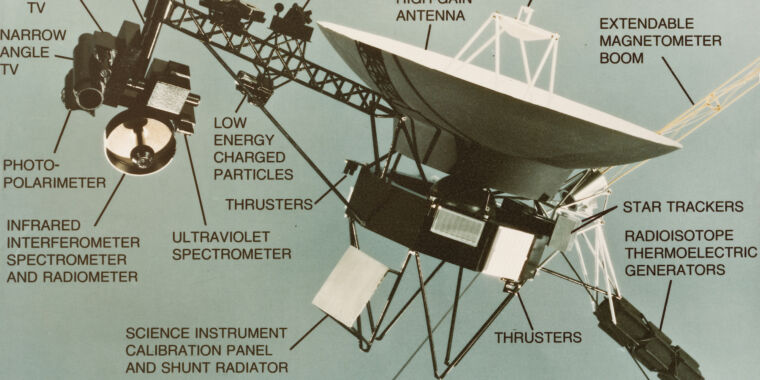Voyager 1 is still alive out there, and plunging into the universe more than 15 billion miles away. However, a computer problem has prevented the mission’s loyal support team in Southern California from learning more about the condition of one of NASA’s longest-lived spacecraft.
The computer glitch emerged on November 14 and affected Voyager 1’s ability to send back telemetry data, such as measurements from the spacecraft’s science instruments or basic engineering information about how the probe is operating. Therefore, there is no information about key parameters regarding the spacecraft’s propulsion, power or control systems.
“It would be the greatest miracle if we got it back. We certainly haven’t given up,” Suzanne Dodd, Voyager project manager at NASA’s Jet Propulsion Laboratory, said in an interview with Ars. “There are other things we can try. But this is the most serious thing we’ve done since I became project manager.”
Dodd became the project manager for NASA’s Voyager mission in 2010, overseeing a small cadre of engineers responsible for humanity’s exploration of interstellar space. Voyager 1 is the most distant spacecraft ever flown, moving away from the Sun at a speed of 38,000 miles per hour (17 kilometers per second).
Voyager 2, launched in 1977, 16 days before Voyager 1, is not far away. It took a more leisurely route through the Solar System, passing Jupiter, Saturn, Uranus and Neptune, while Voyager 1 picked up speed during its encounter with Saturn to overtake its companion spacecraft.
For the past few decades, NASA has dedicated Voyager’s instruments to studying cosmic rays, magnetic fields, and plasma environments in interstellar space. They are not taking pictures anymore. Both probes have passed beyond the heliopause, where the flow of particles from the Sun moves into the interstellar medium.
There are no other operational spacecraft currently exploring interstellar space. NASA’s New Horizons probe, which flew by Pluto in 2015, is on track to reach interstellar space in the 2040s.
cutting edge 50 years ago
The latest problem with Voyager 1 is in the probe’s Flight Data Subsystem (FDS), one of three computers on the spacecraft that work with the command-and-control central computer and another device that oversees attitude control and pointing. Does.
The FDS is responsible for collecting science and engineering data from the spacecraft’s network of sensors and then combining the information into a single data package in binary code – a series of ones and zeros. A separate component called the Telemetry Modulation Unit actually sends data packages back to Earth via Voyager’s 12-foot (3.7-meter) dish antenna.
According to NASA, in November, a repeating pattern of ones and zeros appeared in a data package transmitted by Voyager 1 as if it was stuck. Dodd said JPL engineers spent the better part of three months trying to determine the cause of the problem. He said the engineering team is “99.9 percent confident” that the problem originated in the FDS, causing problems with data “frame syncing”.

So far, the ground team believes the most likely cause of the problem is a slightly corrupted memory in the FDS. However, due to computer hangups, engineers lack detailed data from Voyager 1 that could lead them to the root of the problem. “It’s likely somewhere in FDS memory,” Dodd said. “A bit got flipped or corrupted. But without telemetry, we can’t see where the FDS memory corruption is.”
When it was developed five decades ago, Voyager’s flight data subsystem was an innovation in computing. It was the first computer on a spacecraft to use volatile memory. Each Voyager spacecraft launched with two FDS computers, but according to Dodd, Voyager 1’s backup FDS failed in 1981.
The only signal Voyager 1’s Earthbound engineers have received since November is a carrier tone, which basically tells the team that the spacecraft is still alive. There is no sign of any other major problems. Changes in the modulation of the carrier signal indicate that Voyager 1 is receiving uplinked commands from Earth.
“Unfortunately, we have not yet resolved the issue, or resolved the problem, or gotten any telemetry back,” Dodd said.

